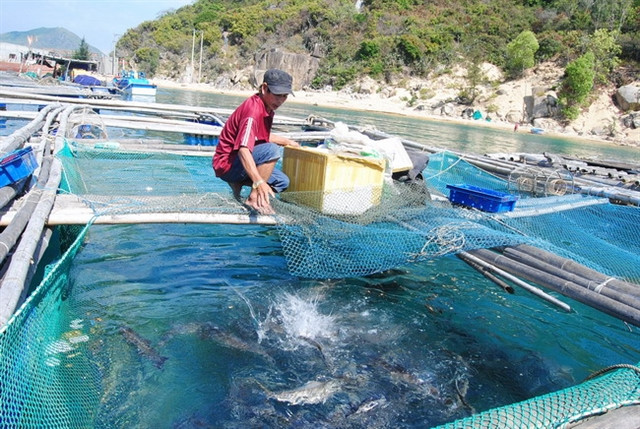 Marine aquaculture farmers need to adopt modern technologies and methods, according to a conference on developing the sector held in Binh Dinh province.
Marine aquaculture farmers need to adopt modern technologies and methods, according to a conference on developing the sector held in Binh Dinh province. Speaking at a conference in Binh Dinh province on February 14 he said Vietnam'smarine aquaculture is behind the times, with only around 10 companies applyingindustrial methods.
Tran Cong Khoi, deputy head of the Directorate of Fisheries’ aquaculturedepartment, said Vietnam is plagued by improper planning, underdevelopedinfrastructure, diseases, and natural disasters.
Only a few enterprises invest in industrial marine aquaculture models sincethey require a lot of resources, he said.
Dr Vo Si Tuan from the Vietnam Science and Technology Advisory Council saidtraditionally marine aquaculture has been done on a small scale, does notconform to government plans and poses high pollution risks.
The solution is to change the technologies and farming methods, he said.
Tran Van Phuc, director of the Binh Dinh Department of Agriculture and RuralDevelopment, said that the province only has 60 hectares of marine aquaculturefarms using industrial methods.
It is gradually industrialising marine aquaculture by adopting technologies andfarming methods that are more effective and environmentally friendly, expandingthe farming area and facilitating investments in hi-tech farming, he said.
Dũng suggested that Vietnam’s marine aquaculture methods should be modernised,and that the sector should be integrated with tourism and other industries.
The Directorate of Fisheries is focusing on drafting policies to attractinvestment and helping small farming households join co-operative groups.
The conference was held by the Ministry of Agriculture and Rural Development, BinhDinh province and Tuoi Tre newspaper to focus on challenges facing marineaquaculture in the country.
Le Xuan Trung, deputy editor in chief of Tuoi Tre newspaper, said Vietnam’sfisheries exports of 11 billion USD last year made it one of the threecountries in the world.
“That shrimp and shark catfish, two of the largest export items in 2022, aremostly from farming shows the country’s improvement in aquaculture.”/.





























